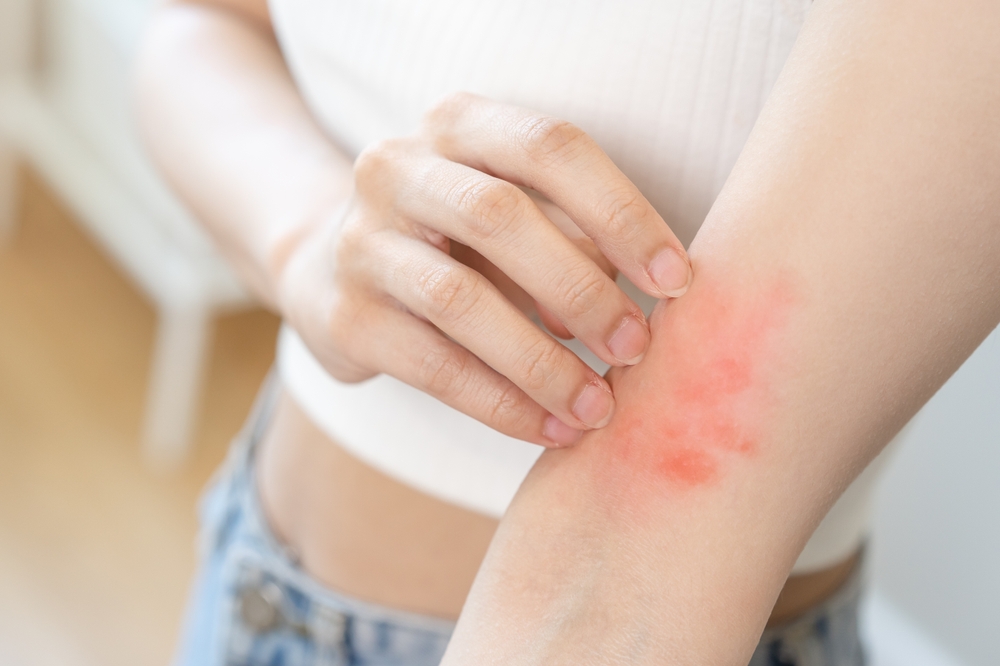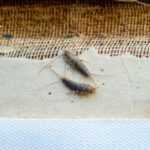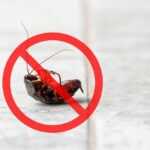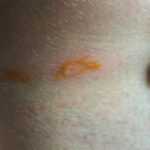Earwig Bite: Identification, Treatment, and Prevention Tips
Wondering if an earwig bite is something to worry about? An earwig bite, more accurately a pinch, is generally harmless. This article will guide you through identifying, treating, and preventing earwig bites.
- Earwig bites are actually pinches from their pincers, not traditional bites, and they rarely break the skin.
- Symptoms of an earwig pinch include minor pain, redness, and itching, but they generally do not pose serious health risks.
- Preventive measures include reducing moisture in the home, sealing entry points, and using traps, which can help manage and deter earwig populations.
What is an Earwig Bite?
An earwig bite is technically a pinch caused by the earwig’s pincers. Unlike many other insects, earwigs do not have biting mouthparts designed to pierce skin. Instead, they use their pincers, located on their abdomen, as a means of defense when they feel threatened. These pincers can cause minor pain and discomfort, but they rarely break the skin.
Earwigs bite people primarily as a self-defense mechanism, not out of aggression. When earwigs crawl onto a person, they may feel threatened and use their pincers to pinch the skin. This reaction is similar to how other insects might sting or bite when they feel endangered. While the pain from an earwig’s pinch is possible, it is generally harmless and does not carry venom.
Contrary to popular belief, earwigs do not bite humans in the traditional sense. The term “earwig bite” is a bit of a misnomer since the discomfort comes from a pinch rather than a bite.
Earwigs live in damp areas and are often found in gardens, under rocks, and within mulch, as well as among garden debris. They are nocturnal insects and are attracted to light, which can sometimes lead them into homes. Earwigs lay eggs in the soil, contributing to their presence in garden environments.
Symptoms of an Earwig Bite
The symptoms of earwig bites are generally mild and include a red mark, minor abrasion, and slight itching. Unlike mosquito bites, which leave a single puncture mark, earwig pinches typically leave two tiny marks where the pincers have gripped the skin. These marks are often accompanied by minor redness and swelling.
In some cases, the affected area may experience mild discomfort and itching, similar to other insect bites. While most earwig bites do not lead to long-term complications, there is a possibility of infection if germs from the environment enter the wound. It’s essential to keep the area clean to prevent such infections.
Rarely, an allergic reaction to an earwig bite can occur, producing symptoms akin to those of other insect bites. These reactions can include more significant redness, swelling, and itching. In extreme cases, symptoms may escalate to hives or breathing difficulties, which would require immediate medical attention.
Are Earwig Bites Dangerous?
Earwig bites are generally not dangerous. Therefore, you shouldn’t be overly concerned if you get bitten. While earwigs can pinch, they generally do not carry venom and are not known to transmit diseases. The pain and discomfort from an earwig pinch are usually mild and short-lived, making them less concerning than other insect bites that can cause more severe reactions.
In rare situations, an allergic reaction to an earwig’s pinch can occur, leading to more significant symptoms such as hives and breathing difficulties. These severe allergic reactions are uncommon but should be taken seriously if they occur. In most cases, the symptoms from an earwig bite resemble other insect bites but resolve quickly without severe complications.
Earwigs usually inhabit soil, which can introduce germs if their pincers break the skin. If an earwig’s pincers break off in the skin, the area may become firm and swollen, potentially turning into a blister. However, such complications are rare, and overall, earwigs are generally harmless to people.
How to Treat an Earwig Bite
Treating an earwig bite is straightforward and involves a few simple steps. First, clean the affected area with soap and warm water to reduce the risk of infection. This initial cleansing helps remove any germs that may have been introduced by the pinch and prepares the skin for further treatment.
Next, apply cold compresses to the bite area to reduce swelling. Cold compresses can help alleviate pain and minimize inflammation, providing immediate relief. Antihistamines available over the counter can help relieve itching. Additionally, topical creams can also provide comfort from discomfort. These treatments are similar to those used for other insect bites and can be very effective.
If the discomfort is severe or the skin is broken, seeking medical attention is advisable. A healthcare professional can provide additional treatment options and ensure no complications arise. Prompt medical attention is particularly important if there are signs of an allergic reaction or if the area becomes infected.
Preventing Earwig Bites
Preventing earwig bites involves a combination of measures to reduce the likelihood of encountering earwigs. Regularly inspecting your home for leaks and promptly fixing them helps minimize moisture that attracts earwigs. Utilizing a dehumidifier is also an effective way to control moisture levels in your home and deter earwigs.
Ensuring proper sealing of doors, windows, and foundation cracks can significantly prevent earwigs from entering the home. Creating a dry zone free of mulch near the foundation of the house can help reduce earwig ingress. Keeping your garden tidy by removing organic debris and maintaining a dry border around the foundation using gravel or ornamental stones can also deter earwigs.
Utilizing low-sided containers filled with oil or beer as traps can effectively capture earwigs. Additionally, natural predators such as birds can help control earwig populations in gardens. Combining these preventive measures can significantly reduce the risk of earwig bites and keep your home and garden earwig-free.
Managing Household Earwigs
Managing household earwigs requires a proactive approach to control their populations. Using rolled newspapers or cardboard tubes filled with straw can effectively trap earwigs, which can then be disposed of in soapy water. This method is simple and non-toxic, making it an excellent option for households with children and pets.
Plant stems can be coated with petroleum jelly to create a barrier that earwigs will not cross. Diatomaceous earth can also be used as a barrier around plants to dehydrate and kill earwigs. These natural methods are effective and environmentally friendly, providing a safe way to manage earwig populations.
Both synthetic and natural insecticides are effective for controlling earwig populations and other pests. They can be utilized to manage these pests effectively. Boric acid can be sprinkled in areas where earwigs are prevalent to deter them. Combining these strategies can help manage household earwigs effectively, ensuring a comfortable living environment.
Common Myths About Earwigs
Earwigs have a scary reputation, mostly due to myths, especially the false idea that they crawl into ears and burrow into the brain. The name “earwig” comes from old beliefs, but the myth is not true. Despite their look, earwigs are not aggressive; they pinch only when threatened and are generally harmless to people and pets.
You will find them in damp areas and around lights, which may bring them indoors. Any pinches (often called bites) are mild, typically clear up quickly, and can be managed with simple care. To reduce encounters, limit moisture and seal entry points.
Knowing the facts replaces fear with practical control and reminds us that earwigs play a small role in the ecosystem without posing much risk to humans.
By understanding the true nature of earwig bites and debunking common myths, we can better manage their presence in our homes and gardens. Remember, while earwigs may look intimidating, they are not aggressive and pose little threat to humans. Taking proactive steps can ensure a comfortable and earwig-free living environment.
Frequently Asked Questions
Can earwigs live in your bed?
Earwigs can indeed live in your bed, especially if it’s located in a humid area like a basement. To prevent this, ensure your sleeping environment is dry and well-sealed.
What should I do if I get an earwig bite?
If you get an earwig bite, clean the area with soap and water, apply cold compresses, and consider using over-the-counter antihistamines or topical creams for itching relief. If symptoms are severe or the skin is broken, seek medical attention.
Are earwig bites dangerous?
Earwig bites are generally not dangerous, as they do not possess venom or transmit diseases. However, there is a slight risk of allergic reactions in some individuals.
How can I prevent earwig bites?
To prevent earwig bites, control moisture levels in your home, seal entry points, and maintain a tidy garden. Using traps and encouraging natural predators can further manage earwig populations effectively.
What are common symptoms of an earwig bite?
Common symptoms of an earwig bite include a red mark, minor abrasion, slight itching, and mild discomfort. If you experience more significant symptoms, it may indicate an allergic reaction, and you should seek medical advice.





